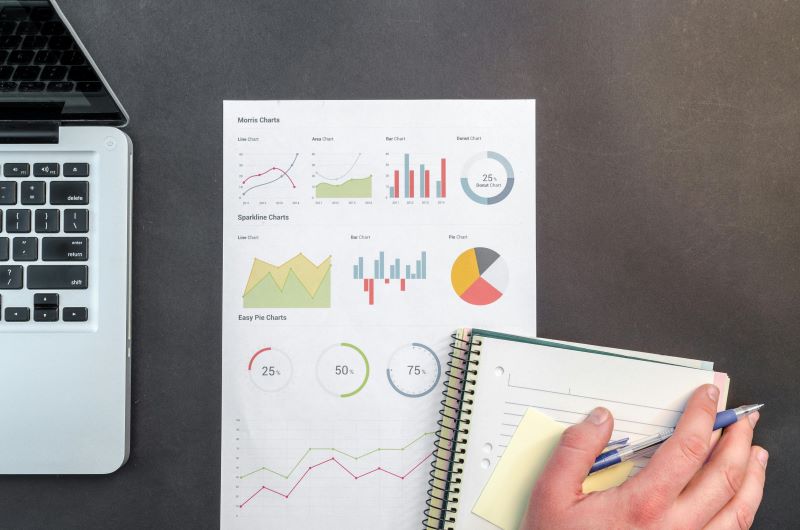Unlocking the Power of Financial Forecasting for Small Business Owners: A Step-by-Step Guide
As a small business owner, managing finances effectively is crucial for long-term success. One of the most powerful tools at your disposal is financial forecasting. Forecasting allows you to predict your business’s financial future based on current and historical data, helping you make informed decisions, avoid cash flow problems, and plan for growth.
In this blog post, we’ll walk you through the step-by-step process of financial forecasting and how it can help elevate your small business to new heights.
Step 1: Understand What Financial Forecasting Is
Before diving into the process, it’s important to understand what financial forecasting is and why it matters. At its core, financial forecasting involves predicting your business’s future financial performance. This includes projections for revenue, expenses, cash flow, and profits over a specified period (typically 12 months or more).
Financial forecasting can be broken into two main types:
- Short-term forecasting: Focuses on the next few months to predict cash flow and immediate expenses.
- Long-term forecasting: Looks further into the future to anticipate growth, potential investments, or new business strategies.
By forecasting accurately, you can avoid unpleasant surprises, prepare for seasonal variations, and make data-driven decisions that drive your business forward.
Step 2: Gather Historical Data
The foundation of any accurate financial forecast is historical data. This is the data you’ve already collected about your business’s past performance. Collect the following information from your financial statements:
- Income statement: Details your revenue and expenses over a period.
- Balance sheet: Shows your assets, liabilities, and equity.
- Cash flow statement: Tracks the movement of cash in and out of your business.
Analyzing this data allows you to identify patterns in sales, expenses, and cash flow. For example, you may notice that your business experiences a dip in revenue during the off-season or that certain costs consistently rise in particular months. This data provides a solid starting point for your forecast.
Step 3: Define Your Key Metrics
Once you have your historical data, you need to decide on the key financial metrics you’ll track. These are the factors that will most impact your business’s financial health. Common metrics include:
- Revenue projections: Estimate future sales based on past trends and industry forecasts.
- Gross margin: The difference between your revenue and the cost of goods sold, helping to assess profitability.
- Operating expenses: Predict costs related to daily operations, including rent, utilities, salaries, and marketing.
- Cash flow: Estimate the timing of incoming and outgoing funds to avoid liquidity issues.
The key to successful forecasting is ensuring that your metrics align with your business goals. If you’re planning for expansion, for example, you might emphasize capital expenditures or staffing costs in your forecast.
Step 4: Create Revenue Projections
Your revenue forecast is one of the most critical components of your financial forecast. To estimate future revenues, consider:
- Historical performance: Look at how much revenue you’ve generated in previous months or years.
- Market trends: Research how the market is evolving and adjust your forecast accordingly.
- Seasonal patterns: If your business experiences peaks and troughs at certain times of the year, factor this into your revenue projections.
- Sales pipeline: Consider your current leads and conversions when estimating future sales.
Use a combination of these data points to create realistic and achievable revenue goals for the upcoming months or year.
Step 5: Estimate Your Expenses
Next, you need to project your expenses. This includes both fixed costs (e.g., rent, insurance) and variable costs (e.g., materials, marketing campaigns). Here are a few considerations for accurate expense forecasting:
- Fixed costs: These remain consistent month to month, so they’re relatively easy to predict.
- Variable costs: These fluctuate based on business activity. Analyze past trends to estimate how these costs may change.
- One-time expenses: If you plan on making major purchases, such as equipment or new software, make sure to account for these as well.
Be sure to leave some room in your forecast for unexpected expenses or changes in your business environment. The more detailed and realistic your expense estimates, the better your forecast will be.
Step 6: Build Cash Flow Projections
Cash flow is the lifeblood of your business. Without enough cash flow, even a profitable business can run into serious trouble. To avoid this, build a cash flow forecast that shows when money will come in and go out of your business.
Consider the timing of both revenue and expenses. For example:
- When will customers pay? If you have invoicing terms, account for delayed payments.
- When are your bills due? Ensure that you have enough cash on hand to cover expenses before the next influx of cash.
By keeping track of your cash flow, you can anticipate potential shortfalls and plan for working capital needs, such as securing a line of credit in advance.
Step 7: Monitor and Adjust Regularly
Once your financial forecast is in place, it’s essential to track actual performance against your predictions. Regularly compare your forecasted revenue, expenses, and cash flow to your actual figures. This will help you spot discrepancies and make adjustments as needed.
If you find that your projections were off, don’t be discouraged. Financial forecasting is an iterative process that requires constant refinement. Use the insights you gain each month to make better predictions and improve your forecasts for the future.
Step 8: Make Informed Decisions
The real power of financial forecasting lies in its ability to guide decision-making. By accurately predicting your financial future, you can:
- Plan for growth: Forecasting helps you determine when you’ll have the capital to invest in new opportunities, like hiring employees or expanding your product line.
- Control costs: By identifying potential cash flow problems or increasing expenses early, you can take steps to cut costs or increase revenue.
- Secure funding: A solid financial forecast can make your business more attractive to investors or lenders when you need additional capital.
Conclusion: The Future of Your Business Starts with Forecasting
Financial forecasting isn’t just a task—it’s an essential process for growing and sustaining a successful small business. By following this step-by-step guide, you can gain better control over your finances, anticipate challenges, and make data-driven decisions that lead to growth. While forecasting is an ongoing process, its power lies in its ability to help you stay prepared, flexible, and focused on the future.
With the right approach, your financial forecast will become a roadmap for navigating the road ahead, keeping your small business on track no matter what challenges arise.





